Introduction
Composable commerce is revolutionizing the e-commerce landscape by offering businesses an agile and modular approach to building their online systems. This model, characterized by interchangeable components, provides numerous advantages for retailers, including the ability to adapt to market changes and meet consumer demands. By leveraging a composable platform, businesses can seamlessly manage inventory across online and in-store channels, enhance the customer experience through personalization, and stay ahead of the competition.
This article explores the benefits of composable commerce, showcases real-world examples of successful implementations, and highlights the role of social commerce and influencer marketing in driving e-commerce success. With the digital marketplace constantly evolving, embracing composable commerce is essential for retailers looking to thrive in the modern retail ecosystem.
Benefits of Composable Commerce for E-commerce Success
Composable business, a model where e-commerce systems are constructed from modular, interchangeable components, offers numerous advantages for businesses looking to thrive in the digital marketplace. This approach provides retailers the agility needed to adapt to market changes and consumer demands. For instance, City Bird, a retailer with a diverse product range, leveraged a composable platform to manage their inventory seamlessly across online and in-store channels, illustrating the versatility of such systems in addressing supply chain and staffing challenges.
Moreover, a case study of City Bird demonstrated how composable trade facilitated their multichannel retailing, enabling customers to access products both online and in physical stores. This adaptability is crucial as the retail landscape continues to evolve, with innovations like checkout-free stores emerging, as seen in Dublin Airport's new store which utilizes Zippin technology to offer a frictionless shopping experience.
The composable architecture's flexibility contrasts sharply with traditional monolithic systems, where any change requires significant restructuring. Instead, composable retail enables retailers to innovate without overhauling their entire system, akin to adding new LEGO bricks to an existing structure.
Digital commerce, an extension of e-commerce, also plays a pivotal role in the modern retail ecosystem. It not only covers the transactional aspect but also enhances the entire user journey by personalizing user experiences based on interests and preferences. Retailers not embracing this integrated approach risk being sidelined in the future digital marketplace.
Statistics underscore the expansive reach of e-commerce, with a diverse range of industries like travel, hospitality, and various market sectors like beverages and food engaging in digital transactions. The rapid growth of e-commerce is a testament to its effectiveness in increasing sales and customer reach.
In conclusion, composable retail and online business in combination offer a strong structure for retailers to satisfy the demands of contemporary consumers, providing a flexible, customer-focused, and inventive retail experience that goes far beyond the conventional buying transaction.
Flexibility and Agility
By adopting a composable commerce approach, e-commerce enterprises acquire the flexibility to quickly adjust to changing market conditions. This modular architecture echoes the principles of LEGO construction, where individual, interchangeable components can be combined or swapped out with ease, ensuring an organization can rapidly respond to consumer demands, pivot strategies, or scale operations seamlessly. Dunelm Group plc exemplifies this by employing an event-driven serverless microservices architecture for their backend, which supports their significant digital platform that contributes to 35% of the company's revenue. Consequently, such a system facilitates a more manageable and maintainable workflow, allowing for the independent development and testing of each component. This modular approach not only streamlines updates and reduces risks but also aligns with the current trends in e-commerce, where eliminating friction points—such as mandatory account creation—can significantly enhance online sales conversion rates.

Enhanced Customer Experience
The digital era has ushered in an age where creating personalized and cohesive experiences for clients is not just a luxury, but a necessity for success. Composable commerce is at the forefront of this revolution, enabling enterprises to integrate a multitude of systems and channels to provide clients with a unified journey across various touchpoints. One prime example is Dunelm Group plc, the UK's leading homewares retailer, which benefits enormously from its digital platform, contributing to 35% of its revenue. The company's approach to leveraging a consolidated backend architecture and a refined frontend experience exemplifies the power of a seamless online presence.
By adopting a unified inventory visibility, akin to the strategies employed by leading retailers, businesses can offer shoppers omnichannel capabilities, such as viewing store inventory online or enjoying hassle-free returns, regardless of the purchase origin. The success of such strategies is evident in the innovative retail experiences brought to life by MediaMarkt's 'Lighthouse' concept stores, which blend technology and customer engagement in a unique retail space, and the checkout-free store in Dublin Airport, setting a new standard in retail convenience.
Furthermore, the growth of interactive trade, exemplified by platforms such as Spotify, alters user interaction by accessing the podcast and vodcast markets, thereby establishing industry patterns. Spotify's move to create original content and provide a seamless streaming experience showcases the immense potential of integrating social elements into business.
Walmart's venture into the metaverse with The Cultureverse celebrates hip-hop culture while offering a gamified virtual experience that showcases the brand's commitment to innovation and community engagement. This aligns with the idea that experience is crucial for e-commerce success, as it directly influences reputation, loyalty, and revenue. With the market for customer experience management expected to expand rapidly, businesses must focus on customer-centric strategies to cultivate loyalty and achieve desired outcomes across their digital and physical channels.
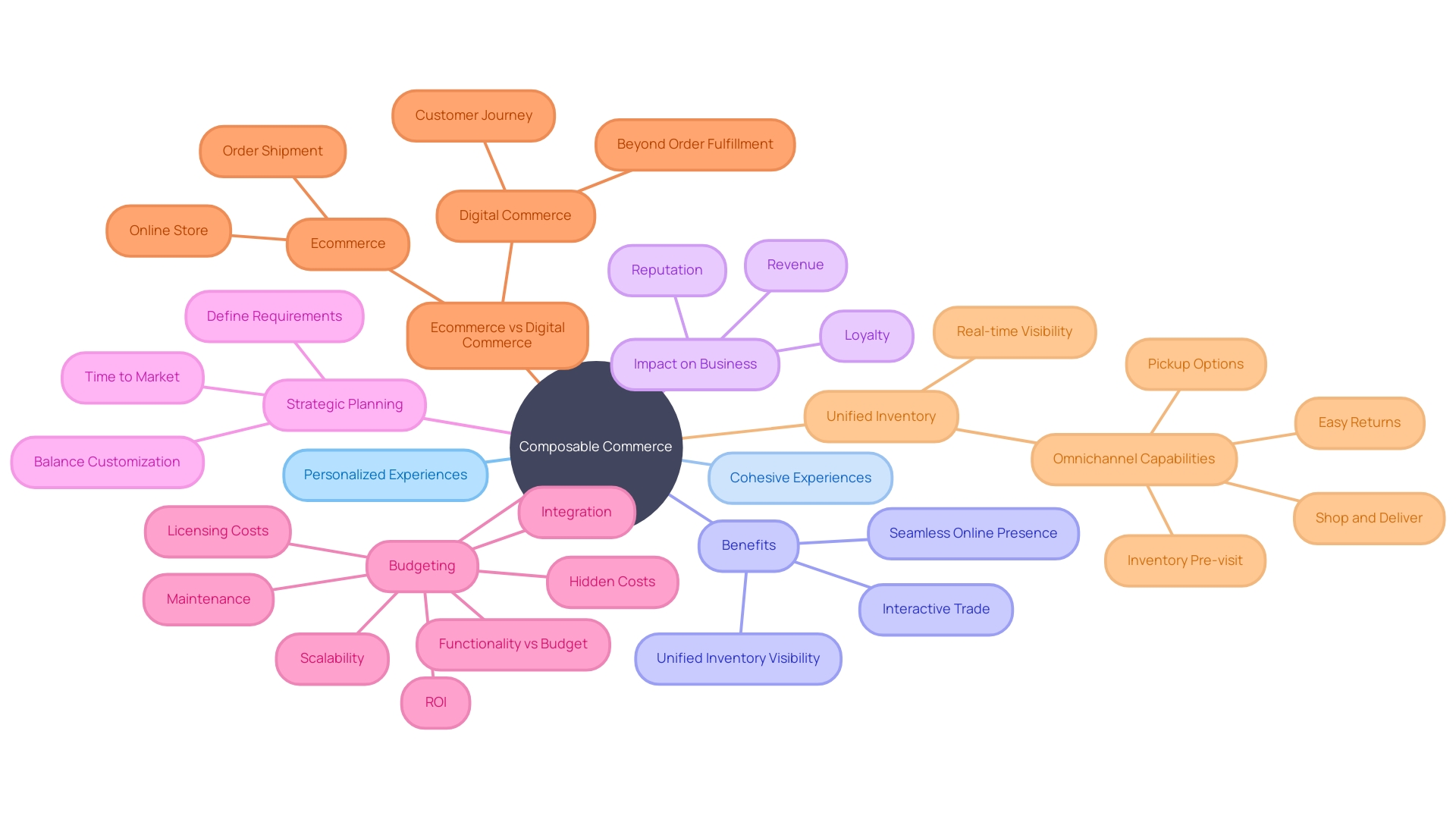
Scalability and Innovation
Composable trade is transforming the way e-commerce enterprises function, enabling them to adjust rapidly to market demands and technological advancements. The core of composable trade lies in its adaptability; it offers a modular structure where enterprises can effortlessly incorporate new technologies and services. This modular approach not only keeps your enterprise at the forefront of innovation but also personalizes the shopping experience for your clients, ensuring that their journey doesn't end with the shipment of an order but continues to evolve.
As the digital trade landscape shifts towards a more integrated experience, composable business enables an end-to-end transactional process without the need for human intervention. This approach has become critical for businesses that aim to maintain a competitive edge and cater to the modern customer who expects omnichannel capabilities, such as real-time inventory visibility and convenient return policies, irrespective of the shopping platform.
The recent insights shared by industry leaders at high-profile events in Switzerland, such as the World Economic Forum in Davos, highlight the growing importance of scalable and adaptable digital infrastructures. Dominic Williams' comments on the Internet Computer's role in enterprise growth emphasize the need for platforms capable of supporting any online system through smart contracts.
Furthermore, the establishment of a checkout-free store at Dublin Airport, using state-of-the-art Zippin technology, highlights the practical implementation of composable trade in creating smooth retail experiences. By incorporating cutting-edge technologies such as camera systems and weight-sensored shelving, this store demonstrates the smooth integration of components that composable trade provides.
In conclusion, composable trade is not just about keeping up; it's about staying ahead and setting the pace for the future of e-commerce. By leveraging a modular infrastructure, organizations can guarantee they are well-prepared to navigate the changing digital trading system and provide outstanding experiences to clients at every interaction.
Personalized End-to-End Customer Experiences
Leveraging the potential of composable commerce, businesses can now provide individualized experiences that connect with clients on a deeper level. Imagine a digital environment where every interaction with your client is informed by their preferences and behaviors, allowing you to tailor marketing initiatives, product suggestions, and pricing models to individual needs. Such precision in personalization not only strengthens engagement but also enhances conversion rates and fosters lasting loyalty. By embracing a composable strategy, businesses can establish lasting connections with their clientele, similar to Dunelm Group plc, which effectively expanded its digital platform to mirror its expansion, and Air India, which revamped its experience by overcoming the obstacles of dispersed data and high call volumes. These strategies are crucial in today's digital-first marketplace, where a unified real-time inventory visibility and omnichannel capabilities have become the norm for retailers seeking to offer a seamless shopping experience. As we move into an era that values genuine connections, creating a customer-centric culture has never been more important. This is the era of building with LEGO-like flexibility in technology, where composable architecture allows for systems that are as adaptable as they are robust - a stark contrast to the rigid structures of the past. With such technological advancements shaping the landscape, the combination of composable and social trade is setting the stage for a revolution in how e-commerce platforms engage and satisfy their customers.
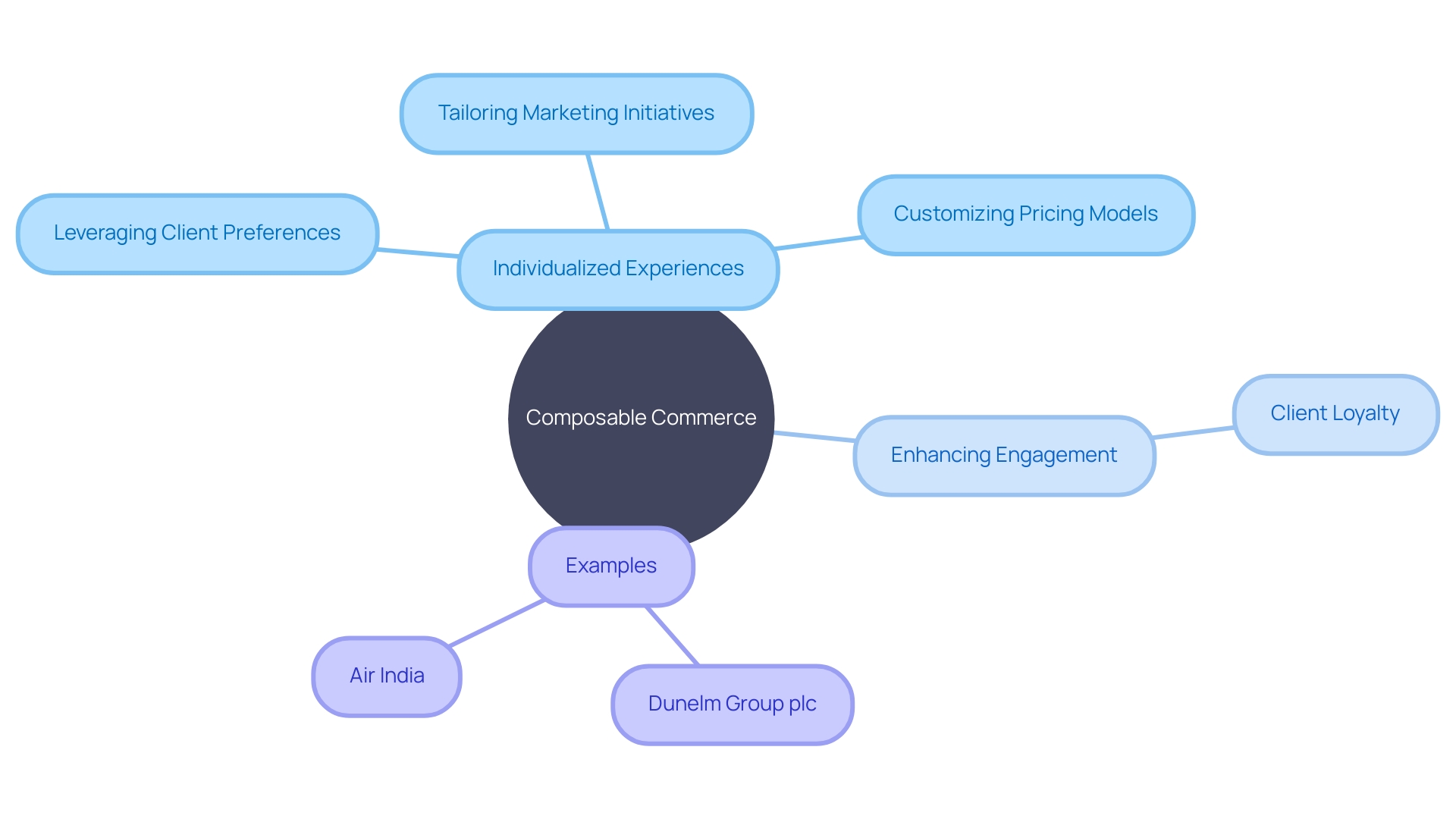
Rapid Response to Changing Business Needs
Composable trade embodies a revolutionary method for e-commerce enterprises, empowering them to quickly adjust to changing market circumstances, consumer inclinations, and technological progress. A modular architecture lies at its core, offering the dexterity to modify and enhance the platform with ease, whether it's for incorporating a novel payment system, integrating a cutting-edge marketing tool, or unveiling a mobile application. Such flexibility guarantees that companies can preserve their competitive advantage in a market that never stands still.
For instance, when Chess.com, the prime destination for over ten million daily chess games, aimed to scale its infrastructure to serve its burgeoning user base, they focused on creating a robust IT framework capable of delivering consistent, global access to the game. This dedication to the adaptability of infrastructure is a characteristic of composable trade, which enables enterprises to broaden their scope and engage with consumers around the world more efficiently than ever previously.
Similarly, businesses like Brompton have utilized flexible trading platforms to overcome the constraints of previous online trading systems that lacked unity and expandability. By transitioning to a composable platform, Brompton was able to address the nuanced needs of individuals' purchasing journeys, blending online and offline experiences seamlessly.
Furthermore, the notion of consolidated trade, which is closely associated with modular trade, highlights the significance of a solitary, up-to-date perspective of inventory across all network nodes. This unified approach is now essential for retailers seeking to provide a wide range of omnichannel capabilities, ensuring convenience for shoppers whether they are shopping in-store, online, or using hybrid models.
In summary, the inherent adaptability and modular nature of composable trade systems not only serve immediate operational requirements but also establish the foundation for future expansion and creativity, making them an essential resource in the ever-changing realm of online trade.
Reduced Customer Acquisition Costs
Utilizing the power of composable commerce is crucial in simplifying acquisition and, consequently, enhancing profitability. By incorporating focused data analytics, e-commerce enterprises can identify marketing strategies that result in the most effective engagement and conversion rates. This approach was exemplified by Gothrider Coffee, a brand that emerged from the passion of its founder, Phil Kyprianou, for a unique e-commerce experience. Through astute market research and product bundling, Gothrider Coffee significantly enhanced its acquisition strategy. Similarly, Lemonaid Health leveraged its extensive range of telehealth services to refine its paid media strategy, illustrating the benefits of a composable infrastructure in optimizing marketing investments and maximizing ROI.
Notably, the Baymard Institute's research underscores the impact of customer experience on e-commerce success, revealing that a staggering 70% of US retail shoppers have abandoned online purchases due to poor checkout design. By eliminating friction and simplifying the purchase process, businesses could recuperate an estimated $260 billion in lost sales. Furthermore, embracing a customer-focused, decentralized business model allows customers to make smooth transactions within their existing digital ecosystem, a pattern strengthened by the changing consumer landscape during the COVID outbreak. Just like Gothrider Coffee and Lemonade Health show, embracing composable trade and prioritizing user satisfaction are essential for success in the ever-changing online market.
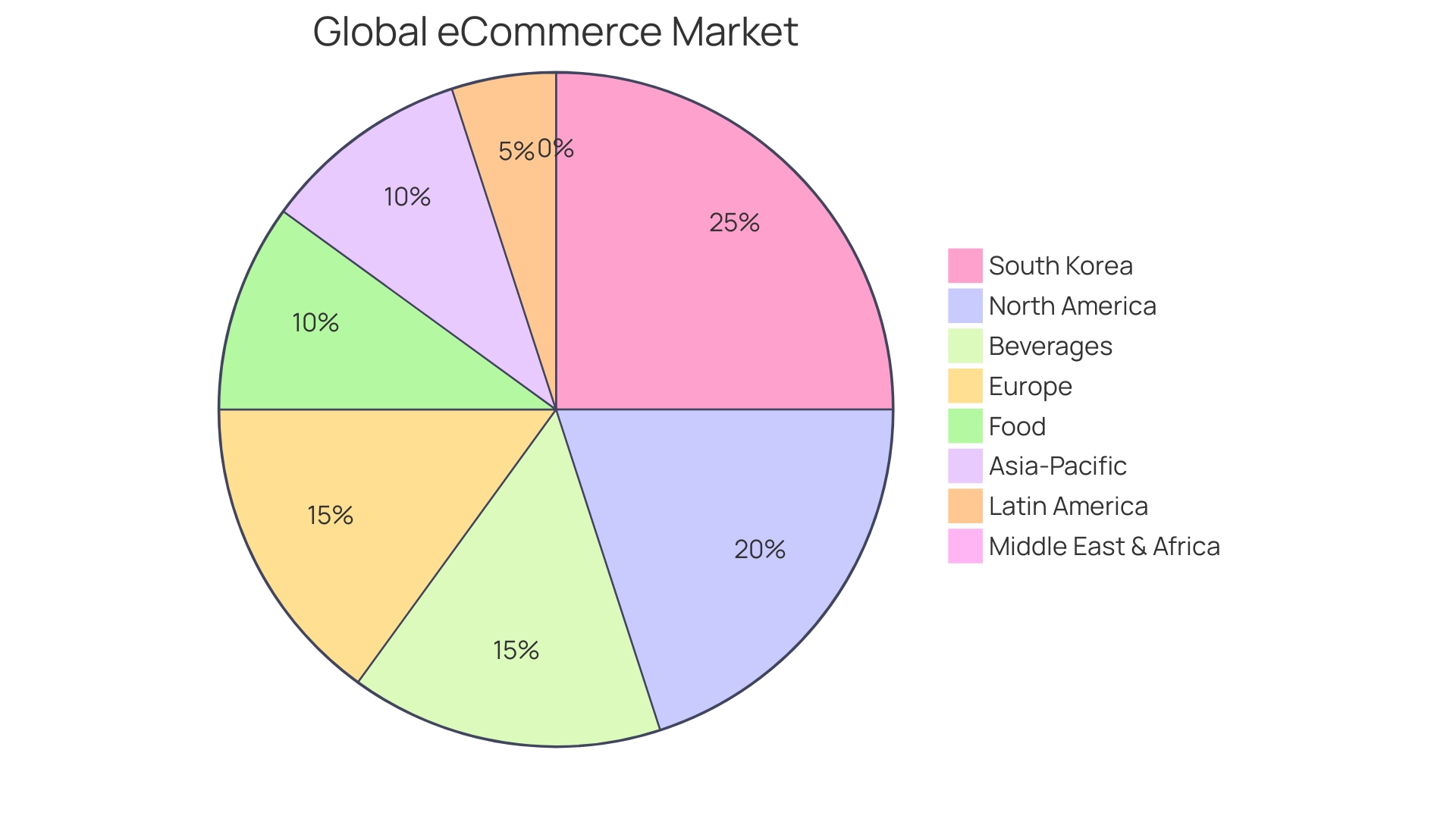
The Role of Social Commerce in E-commerce Success
The emergence of social selling has become a potent avenue within the e-commerce framework, effortlessly integrating the extensive reach of social media with the economic aspirations of enterprises. This concept has transformed the way small retailers engage with their customer base, as seen in the case of a tea vendor from Nagpur, Maharashtra, who soared to fame through online platforms. The merging of trade within online platforms enables companies to receive orders and handle transactions directly within an application, making use of the interactive characteristics of these networks.
A report by Bain and Co. Sequoia India highlights the profound impact of social media on trade, with an impressive 85% of transactions with small retailers being influenced by online platforms. This trend is supported by SCORE research, indicating that 77% of smaller organizations utilize media platforms to boost sales, enhance customer service, and increase brand visibility. Small Business Trends also observed the early adoption of e-commerce, with social networks introducing 'Buy It' buttons as early as 2015, paving the way for businesses to reap substantial success through these channels.
In spite of the potential of online buying and selling, consumer apprehension about data management poses a significant obstacle, with almost 40% reluctant to complete transactions. This concern is particularly evident among younger consumers, who often favor the security of established online retailers. As online networking platforms strive to enhance data security and confidence, the count of engaged online networking users is estimated to reach six billion by 2027, as indicated by Statista, indicating a vast potential for the expansion of digital trading.
The insights of Nicole Larson, National Research Manager for Retail Services, further emphasize the need for platforms to enhance their trustworthiness. Meanwhile, PYMNTS Intelligence highlights the significance of data and analytics in comprehending the constantly changing environment of digital trade. As enterprises adjust to these trends, the strategic utilization of online trade is becoming a crucial component of a prosperous digital marketing strategy, impacting a substantial 74% of consumers' buying choices as per Smartly. Io research.
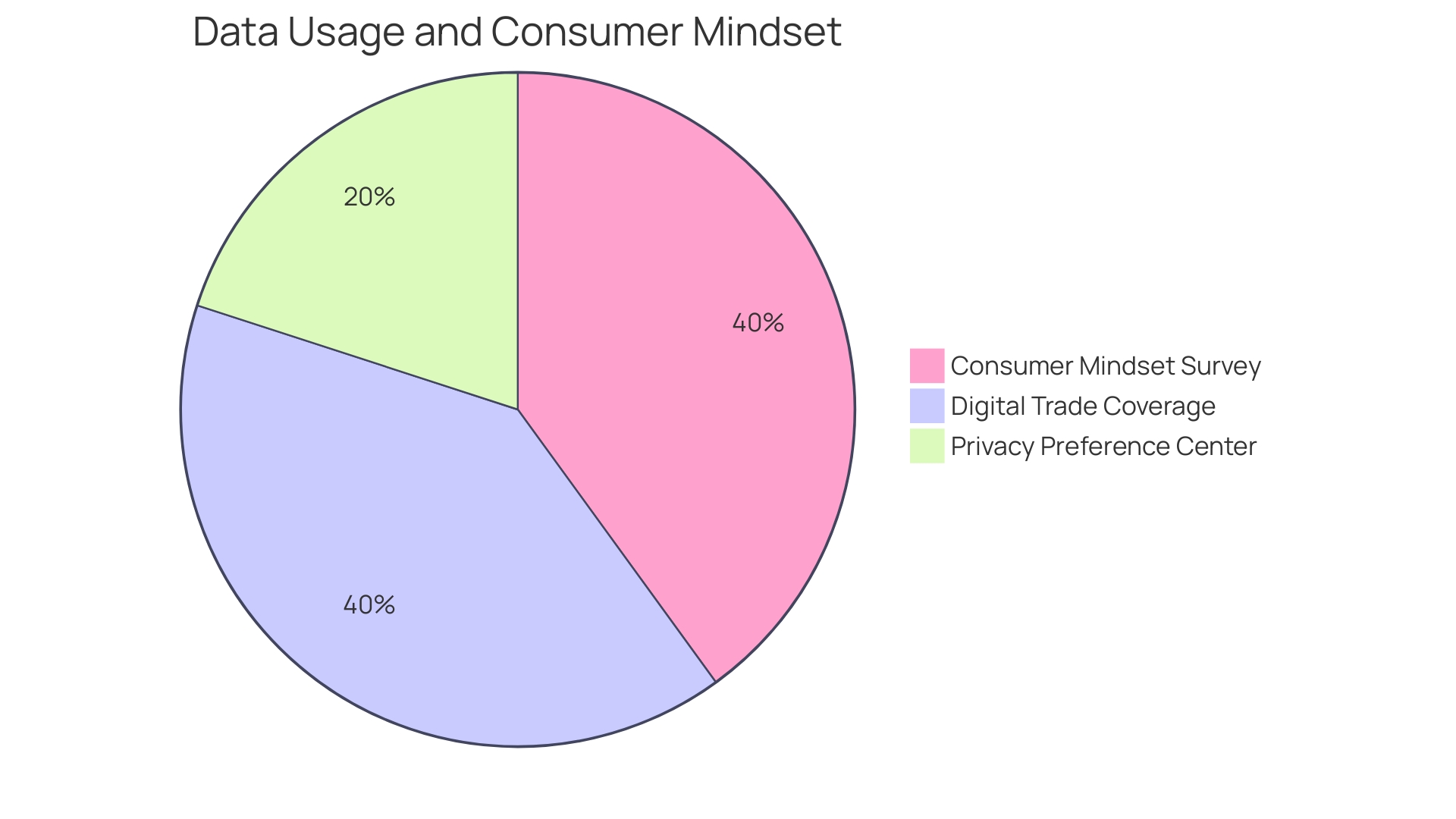
Integration of Social Media Platforms
The interaction between companies and consumers is undergoing a transformation thanks to the influence of social media networks. This digital marketplace phenomenon empowers customers to engage with products through discovery, reviews, and seamless in-app purchases, directly from platforms like Facebook, Instagram, and Pinterest.
An excellent illustration of the influence of social selling can be seen in the narrative of Dolly Chaiwala, a tea seller from Nagpur, Maharashtra, who gained popularity through engagement on digital platforms, demonstrating the strength these channels possess in promoting enterprises. With 5.04 billion worldwide media users as of January 2024, the reach is vast, and the influence is substantial—74% of consumer purchasing decisions are swayed by networks.
The incorporation of online buying strategies is crucial for businesses aiming to access this market, as demonstrated by the successful execution of 'Buy It' buttons during the holiday season of 2015. Social networks are not just connectors of people; they're pivotal in driving commercial transactions, with a staggering 85% of such transactions for small retailers being influenced by these platforms.
Companies such as L'Oreal have embraced this phenomenon, partnering with payment providers to establish B2B marketplaces, thus recognizing the crucial role of online business. With an expected increase to six billion engaged users by 2027, the potential for expansion through online business is certain to rise, making it a crucial element of any future-oriented electronic trade approach.
Influencer Marketing
Utilizing the influence of marketing has become a cornerstone in the realm of commerce. With the influencer marketing industry on track to reach a staggering $21.2 billion by 2023, its role in shaping consumer behavior is undeniable. As influencers share their experiences and recommendations, they forge a connection with their audience, who often view their content as personal, authentic, and trustworthy. This connection is vital, as shown by the impressive 47% of British adults and 45% of young Germans aged 16-34 who have been influenced to buy products endorsed by these media personas.
The impact of influencer marketing extends beyond mere product promotion. It plays a fundamental role in amplifying brand awareness and cementing credibility. When an influencer features a product, it is not just an advertisement; it is a personal endorsement that carries weight with their followers. This translates into not only increased visibility but also a significant uptick in sales, as the influencer's following is highly targeted and already engaged with the content they create. The intersection of influencer marketing and e-commerce has thus proven to be a synergistic and dynamic force, leveraging the persuasive power of popular figures to drive business growth in the digital landscape.
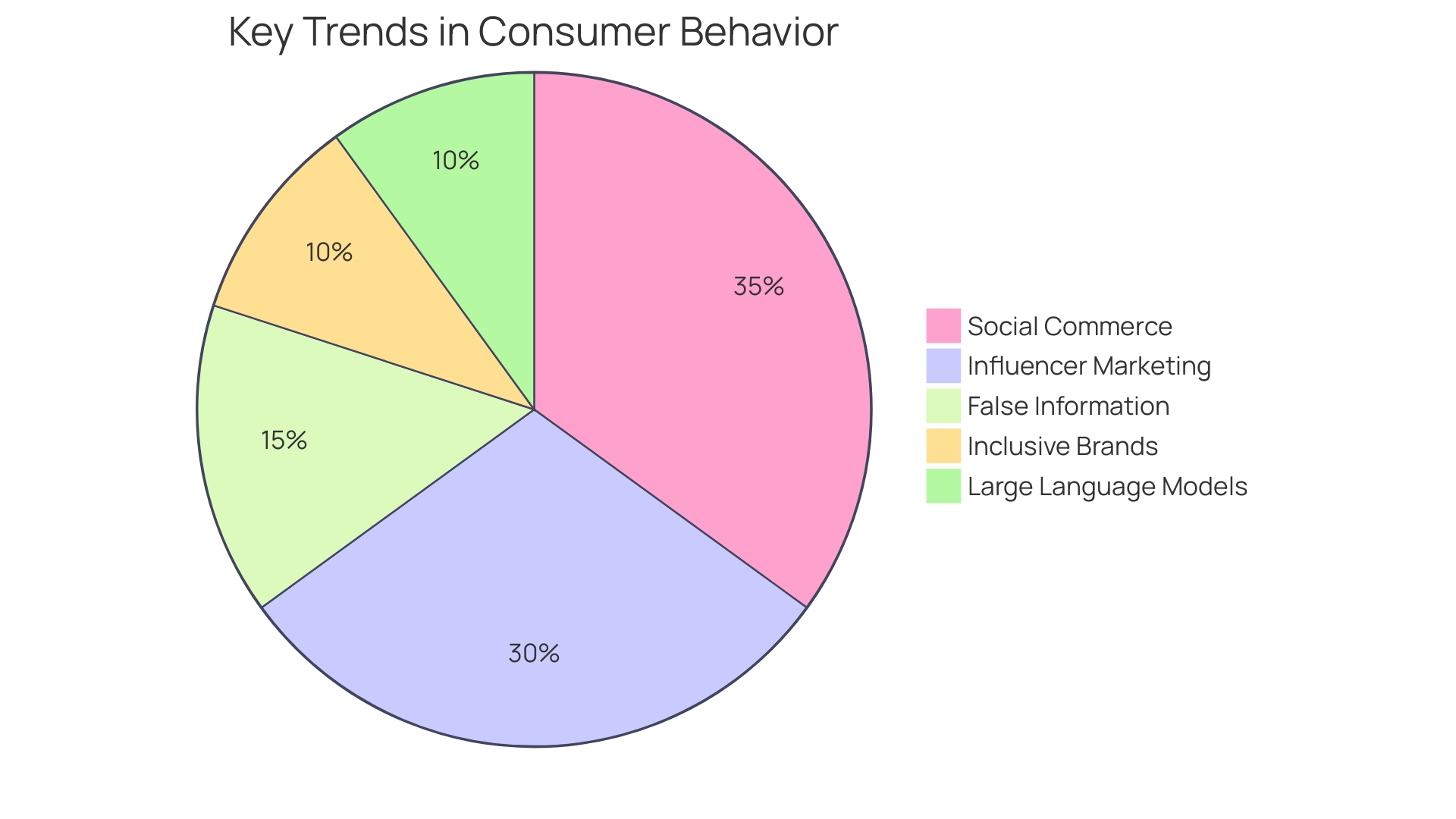
User-Generated Content
Harnessing user-generated content (UGC) is a pivotal component of commerce that can amplify trust and credibility for your brand. This approach involves encouraging customers to share their experiences and photos on digital platforms, effectively providing evidence to potential customers. Harnessing the power of UGC can lead to enhanced conversion rates and foster repeat business.
For instance, Spotify's focus on podcasting, particularly with its recent expansion into video podcasts, underscores the importance of engaging content in retaining and growing an audience. The integration of visuals in their podcasts, following the insight that visuals are processed much faster by the brain than text, has seen their engagement soar, with video podcasts now comprising a significant portion of their consumption.
Similarly, the recent introduction of TikTok Shop in the U.S. underlines the promise of online trading. The platform harnesses the virality of hashtags like #TikTokMadeMeBuyIt and allows direct purchases through creator posts, showcasing how proof and UGC can drive e-commerce success. This is further enhanced by their affiliate program that fosters partnerships between creators and sellers.
The game-changing impact of online shopping has been apparent since the introduction of 'Buy It' buttons on networking platforms, with studies demonstrating that networking platforms influence 74 percent of consumer buying choices. The influencer marketing industry, which relies heavily on UGC, is expected to generate $13.8 billion in revenue, while 57% of consumers are more likely to make a purchase from brands they follow on media platforms. The worldwide extent of online buying and selling is poised to grow, with earnings via digital platforms predicted to reach nearly $700 billion.
MCoBeauty's strategy of utilizing influencer marketing to boost both retail and online sales, with plans to scale its program for U.S. expansion, showcases the effectiveness of UGC in e-commerce growth. Their success in Australia, driven by a strong influencer marketing campaign, is evidence of the power of utilizing proof in enhancing brand credibility and increasing sales.
Social Shopping Features
With the increase of media's impact on commerce, incorporating shopping features into e-commerce websites has become a strategic necessity. Sharing buttons, login options, and commenting functionalities are more than just conveniences; they're powerful tools that leverage the vast user base of media, projected to reach around six billion by 2027 according to Statista. These attributes facilitate effortless product sharing among online networks and streamline the login process using social media credentials, enabling individuals to engage in discussions through comments and reviews seamlessly. A Bain and Co. report, published in Fortune India, highlights this by revealing that 85% of transactions with small retailers are influenced by media. Furthermore, SCORE research shows that 77% of small organizations are utilizing media platforms to strengthen sales and improve customer service. Nevertheless, obstacles like worries about safeguarding personal information, which impact approximately 40% of customers, need to be resolved in order to completely unleash the capabilities of online trade. By embedding social shopping elements into their platforms, e-commerce businesses can capitalize on the driving force of social networks to amplify traffic, uplift conversion rates, and cultivate a community ethos among their clientele.
Real-World Examples of Successful Composable Commerce Implementations
Real-world examples of composable trade in action demonstrate its transformative potential. Consider the challenge faced during major shopping events like Black Friday and Cyber Week, where the demand for deals is immense. The development of a Deals tab using modern, composable technologies such as Swift UI and Test demonstrates the agility and flexibility provided by this approach. Swift UI's declarative framework and built-in view previews allow engineers to craft user interfaces with reusable components, enabling rapid and dynamic response to consumer needs.
On the other hand, the evolution of the listing screen, as observed in platforms like Etsy, underscores the necessity of adaptable architecture. With nearly 200 experiments conducted on the listing screen over three years, the original architecture began to strain under the pace of change. This led to an inconsistent and complex codebase, highlighting the need for a modular approach that can accommodate rapid growth and experimentation without sacrificing stability.
The statistics speak for themselves: the Baymard Institute reports that 70% of US retail shoppers have abandoned a purchase online, with 25% citing the need to create an account as a barrier. This suggests a potential loss of $260 billion that could be mitigated with a composable and frictionless checkout experience. Enhancing checkout flow could improve large e-commerce store conversion rates by an estimated 35%.
Unified selling is another important aspect, highlighting the significance of real-time inventory visibility across all sales nodes. Retailers aiming to offer omnichannel capabilities must adopt a backend that supports seamless shopping experiences, from in-store purchases to home deliveries and easy returns, regardless of the point of sale. A composable architecture isn't just a theoretical ideal; it's a practical necessity for enterprises looking to thrive in the dynamic and demanding e-commerce landscape.
Example 1: Shopify Plus
Embracing the composable commerce model, Shopify Plus offers an adaptable enterprise-level e-commerce solution with a modular architecture that empowers companies to craft their unique online presence. By seamlessly integrating with a wide range of third-party applications, companies can customize their e-commerce experiences to align with their brand identity and fulfill the expectations of their target audience. This method not only promotes innovation but also facilitates scalability, laying the groundwork for enterprises to flourish in the ever-changing global e-commerce environment, which is projected to exceed $7 trillion by 2025. Shopify Plus positions itself as a trusted partner in this growth, with a commitment to continuous improvement in performance and the integration of strategic third-party relationships, as underscored by its robust financial outlook and market presence in over 175 countries. This strategic platform choice enables retailers to enhance their operations across order management, inventory control, client relationships, and marketing automation, aligning with the increasing demand for personalized and responsive online shopping experiences.
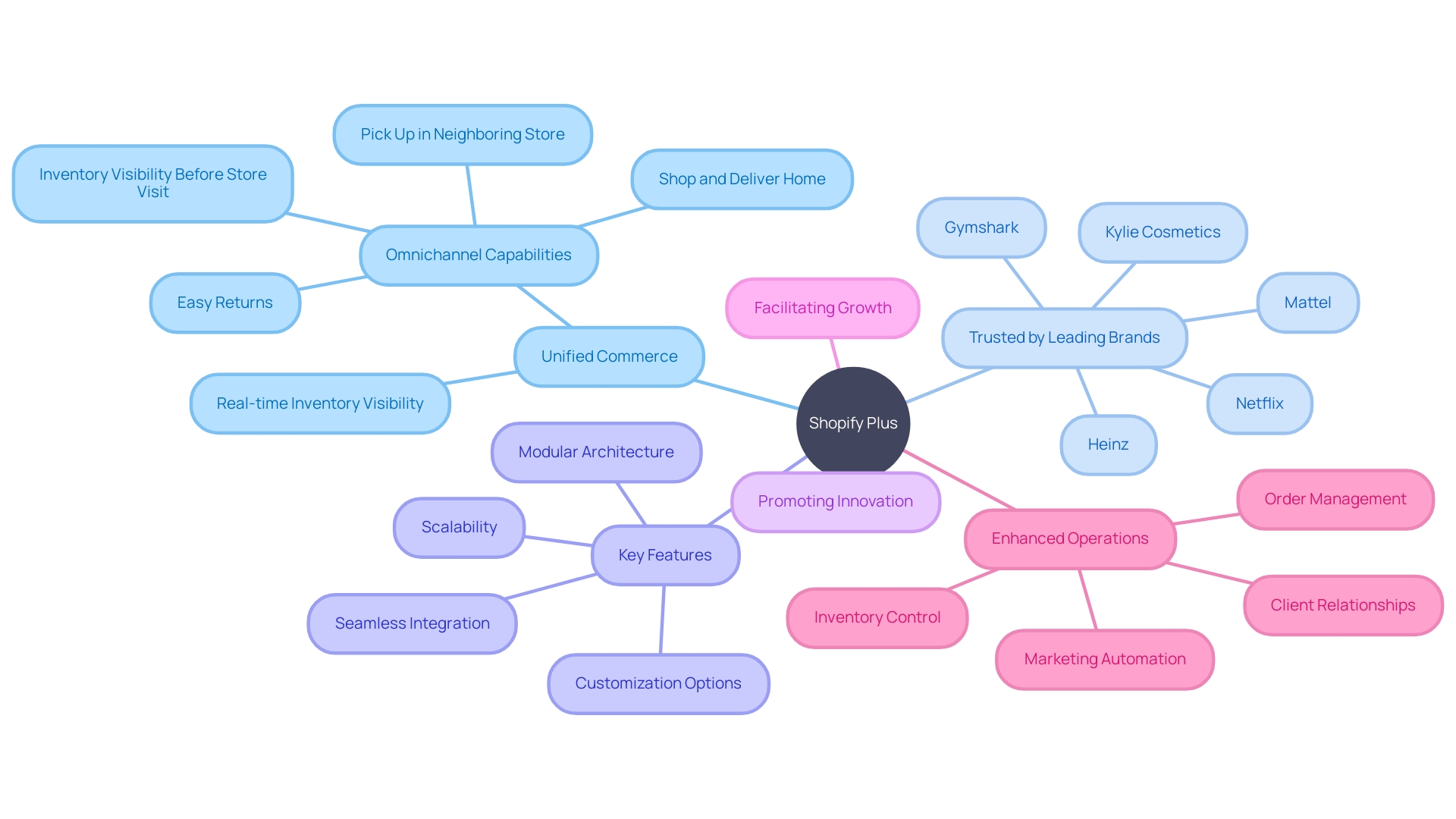
Example 2: Magento Commerce
E-commerce platforms like Magento Commerce are revolutionizing the way companies operate online, offering a composable architecture akin to a collection of LEGO pieces. This innovative framework allows for the creation of a personalized, adaptable online store by selecting and assembling various independent components. Businesses can tap into an expansive marketplace of extensions and integrations, customizing their e-commerce capabilities to fit unique needs and preferences.
A composable architecture not only facilitates the crafting of tailored experiences but also enhances operational efficiency, paving the way for significant revenue growth. Each modular component can be independently developed, tested, and updated, making maintenance simpler and promoting longevity through reusability.
Furthermore, this strategy promotes a equilibrium between personalization and speed-to-market, guaranteeing organizations can adjust rapidly without disregarding their ROI or facing unforeseen expenses. The flexibility of such an architecture is demonstrated by Chess.com, which serves over ten million games daily and has cultivated a community of more than 150 million users. With a focus on stable IT infrastructure, the platform offers a digital version of chess that connects players globally, showcasing how a composable architecture can scale and adapt to user demands.
In the contemporary 'phygital' landscape, where physical and digital channels merge, the ability to offer a seamless experience is crucial. As we've seen with the rise of events like Amazon's Great Indian Festival sale, the integration of online and offline touchpoints is essential for meeting customer expectations for convenience and immediacy.
With the appropriate composable e-commerce platform, companies are equipped to innovate and expand in a rapidly evolving digital marketplace, where personalization, efficiency, and scalability are key to staying ahead.
Example 3: BigCommerce
Embracing the power of composable commerce, Bigcommerce is at the forefront of delivering tailored online retail experiences. By merging its modular architecture with a diverse range of applications and integrations, Bigcommerce offers enterprises the tools to craft highly personalized online storefronts. This approach is crucial in crafting tailored experiences that resonate with individual needs and preferences. The success stories emerging from this innovative platform demonstrate its capacity to propel businesses forward by enhancing growth and operational efficiency, ensuring they remain competitive in a swiftly evolving digital marketplace.
Take, for example, Brompton's transition to BigCommerce, which emerged from the need for a scalable and flexible platform that could grow with the company's shifting priorities. Their experience underscores the importance of a flexible platform that can adjust to the multichannel nature of contemporary e-commerce, where the journey of the consumer blurs the boundaries between online and offline interactions. With Bigcommerce, Brompton has been able to implement features like a 28-day satisfaction guarantee and a bike hire program, reinforcing their dedication to client satisfaction and setting a new standard for the digital shopping experience.
Furthermore, the narrative of Gothrider Coffee's Phil Kyprianou highlights the transformative potential of digital trade. Having established a unique brand, Gothrider Coffee now leverages product bundling, among other strategies, to distinguish itself within a competitive market. This strategic move demonstrates the significance of comprehending the intricacies of the consumer journey, which starts long before and extends far beyond the point of sale, a notion well-captured in the digital commerce ethos BigCommerce embodies.
As companies continue to navigate the digital ecosystem, solutions like Bigcommerce are proving indispensable in offering a seamless, end-to-end transactional process. The platform's capability to adapt to consumer interests and preferences, backed by strong analytics and flexible functionality, equips enterprises with the ability to not only attract new clients but also to improve lifetime value and profitability.
In a world where digital trade is rapidly outpacing traditional retail models, BigCommerce's approach showcases the benefits of a digital-first strategy. With the increasing number of internet users worldwide, as evidenced by the 759 million active users in India alone, the e-commerce industry is set to flourish. By leveraging composable commerce, businesses can better connect with customers at every touchpoint, ensuring a more engaging and successful buyer journey.
Conclusion
In conclusion, composable commerce offers numerous benefits for e-commerce businesses. It provides the agility needed to adapt to market changes and meet consumer demands. Real-world examples showcase the versatility of composable platforms in managing inventory, offering multichannel retailing, and enhancing the customer experience.
Integrating social commerce and influencer marketing is crucial for e-commerce success. Social commerce blends social media reach with commercial ambitions, while influencer marketing shapes consumer behavior.
Composable commerce enables rapid scaling and innovation. It allows for easy integration of new technologies and services while personalizing the shopping experience. Real-world examples demonstrate its transformative potential in meeting evolving market demands.
Lastly, composable commerce reduces customer acquisition costs by optimizing marketing strategies and enhancing the customer journey. The integration of social shopping features and personalized experiences amplifies the benefits.
In summary, embracing composable commerce is essential for businesses looking to thrive in the digital marketplace. It provides the framework for success in the modern e-commerce ecosystem, offering agility, enhanced customer experiences, scalability, reduced customer acquisition costs, and the integration of social commerce and influencer marketing.
Discover the benefits of composable commerce for your e-commerce business!





